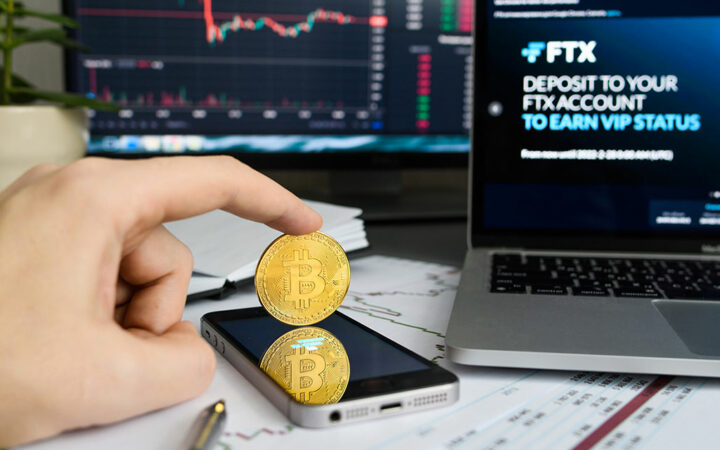“Our confidence is based not on the high flying coins but on deep conviction concerning the technology…” – KEY
In a bear market, one can expect investors to be skittish about new investments, and their general sentiment is to cut down on losses, i.e. stop investing. There were actually rumors that ICOs are dead as there is no impressive market movement to show life. Then, one morning, the news is out that ICOs are reviving but in another form – no, not zombies.
The success leaders cited by the Forbes’ ICO report were service and utility tokens, or protocol assets not designed for monetary exchange but rather assets backed by new services that exist apart from their fundraising potential. Well, for many months, I kept shouting at the top of my voice that the next wave of successful ICOs would be from the “enterprise” class, the ones which will be successful in bull and bear, no matter what.
I was asked what I meant by “enterprise” class. Well, it’s simple.
– Real people with real experience;
– Real company with real offices;
– Real team with real full-time hands-on effort;
– Real money from the founder, as much as from the private investors;
– Real product, not just coded in GitHub, but live, with users, a live community, not today, but for many years;
– Real revenues already coming in, month on month, not just a loss-making-forever-trillion-dollar-opportunity.
This has the “trust” and “security” from the “STO”, but hassle-free, flexible, low relative fundraising expenses as an “ICO”, with a very balanced “growth driven” direction and objective from people who “finally” make sense.
Here is a video that shows you an example of what I mean by the enterprise-class projects.
Here are some answers to questions you might have wanted to ask with the changing ICO space.
What Sort of Clauses Protects the Investor if No ICO Happens?
Only public investors get their funds back if the ICO fails to achieve soft cap. We don’t use the term “refund” for private investors because their funds become the seed funds for product development and marketing an ICO and it is used ahead for ICO completion.
However, that clause may end up in the agreement if the private investor demands it, but then, you would still need seed funds which is a high-risk investment which may be lost if the ICO does not take place or does not take place successfully.
We can have a clause that the project will refund the private investors with remaining funds in proportional portions if the project fails to even begin the ICO. That is if you decide not to even start the ICO after collecting private funds then the remainder of the funds which we have not used in any form, for dev/marketing, can be returned. Although that is a very unlikely situation.
What Sort of RoI are These Token Sales and Bonuses Providing the Investor?
1) 40% bonus should be the highest at this point in time, else it triggers scam flags. That means, right off the bat, if the investor sells post-ICO, they get all their investment back + 40% bonus tokens of equal value, which is like 40% ROI.
However, while selling, the price will fall very fast leaving their profit much lower if any. But it’s a good practice to not let them sell their bonus tokens immediately and proposing a hold period, as it makes public sale investors safer from heavy dumps. Although this will be a point of negotiation with the investors as naturally, they may not like the hold period.
2) Also after the hold period when they sell, the price may be lower mostly or sometimes higher than the price they sold earlier. As a business, if you do a good job of marketing and progress, the value will be higher for them to sell later which is the good part.
That is one of the reasons why on things like tokenomics, you need to spend more time by working through the whole business direction, future, journey, uses and then conclude on this finally, so it is the top-notch one and gives the best results post-ICO.
When Will the ICO Happen?
A decent estimate is 60-90 days from the time you have first set of funds locked in. But it is much better if you can delay it up to 150-180 days. In the past, ICOs were just a matter of ramping the marketing campaign and going live. But now, there are real growth metrics in place, real progress to report, true community to build, proper product beta to show, if possible with live and real users onboarded. That takes time and 6 months is a great target.
Note that the tokenomics and dates of ICO are subject to change as you progress and get closer. That’s normal, nothing to freak. The bonus and value of tokens going to the investor will remain proportional, e.g., if we commit say 1000 tokens valued $1000 ($1/token) and later you decide to dilute token’s value, it can be 10,000 tokens for $1000 value (10 cents a token).
What are the Specifics About Burning Remaining Tokens?
Instead of burning all unsold tokens like traditionally done, I would propose a hybrid. Considering the fact that upcoming ICOs are a real enterprise-class business, all unsold tokens would enter a smart contract (code will be shared with the public before the ICO for their verification) where it will be LOCKED for 5 years and then BURNED.
During the 5 years, when a private sale or future ICO sale happens, it can be used for the same for raising additional capital. The funds will be raised at the current market price of the token or the ICO’s final round’s price or at a premium price agreed with the investors, whichever is HIGHER.
People do not like tokens not burned because later someone can buy at a lower price and dump the market. When you price protect them by saying it can never be lower than ICO’s last round or the market price of that time, they would appreciate it as its another avenue for a price increase and old investor’s exit, if they want to. It’s the duty of the business to give investors exit once in a while.
Most likely, when selling those locked tokens, it will be a premium price if the business is doing good as someone cannot buy so much off the market without over-inflating the price. So even a 10% or 15% premium price compared to the exchange would be acceptable.
What Other Specifics are Needed to Craft the Sales Copy Details?
Tokenomics, dates and performance numbers (traffic, revenues, active users, revenue models, etc.) for 5 years considering successful fundraising.
If that financial projection is there, they can see the value of their tokens in the future if they decide to continue and hold for the long run. For real enterprises, it does make sense to hold it for as long as 3 years, as the risk is higher in speculation than in strategic investment
Note: You will see more of these questions to come. Do you want me to help you with your ICO? Ask the question to yourself. Are you at least 75% close to such quality startups? If yes, reach out. If not, work at getting better before seeking help from anyone.
Disclaimer: Coinspeaker is committed to providing unbiased and transparent reporting. This article aims to deliver accurate and timely information but should not be taken as financial or investment advice. Since market conditions can change rapidly, we encourage you to verify information on your own and consult with a professional before making any decisions based on this content.

Karnika E. Yashwant (aka KEY) is the CEO of KEY Difference Media, ex CTO of NewsBTC, ICO advisor and backbone to top 5 ICO marketing agencies, many US (SF/LA) based PR & marketing firms. With his 11 years track record in Content Marketing, he is #9 top influencer in the crypto sphere. KEY is a contributor to prestigious crypto news sites which includes NewsBTC, Cointelligence, and Cryptopolitan.





